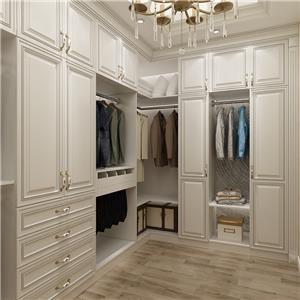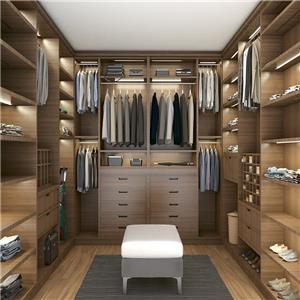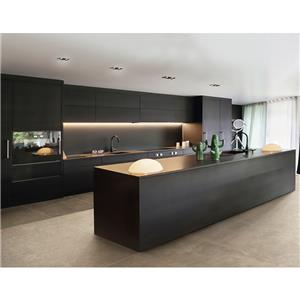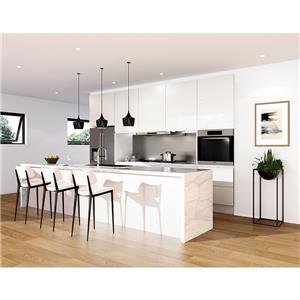Explore the future living space - the development trend of the integration of cabinet design and technology
Explore the future living space - the development trend of the integration of cabinet design and technology
I. Introduction
Kitchen Cabinets play an indispensable role in home life. They are not only an important tool for storage, but they can also beautify the space and reflect the owner's taste. It accommodates kitchen utensils, tableware, food and other daily necessities, making the home environment neat and orderly. With the changes of the times, the functions of cabinets have gradually enriched, from a single storage function to integrating multiple functions such as display, partition and even embedded electrical appliances. In terms of form, modern cabinet design pays more attention to ergonomics and space utilization efficiency, and has various styles, such as simple style, retro style, modern style, etc., to meet the needs of different consumers. At the same time, intelligent cabinets have also emerged, realizing remote control, automatic sterilization and other functions, greatly improving the convenience and comfort of life.
In the future, the development trend of cabinets will pay more attention to green environmental protection and intelligence. In terms of materials, more renewable, pollution-free and environmentally friendly materials will be used to achieve the goal of sustainable development. In terms of functional design, smart cabinets will further integrate high-tech means such as the Internet of Things and artificial intelligence, such as automatic inventory identification, intelligent recommended menus, food expiration reminders and other functions, to realize the comprehensive intelligence of kitchen life. In terms of form design, flexible changes and modular combinations may be made according to space and user needs, striving to maximize the use of space and meet individual needs. At the same time, health elements will also be deeply embedded in the cabinet design, such as antibacterial, dehumidification, air purification and other functions to ensure the quality of life and health and safety of users.
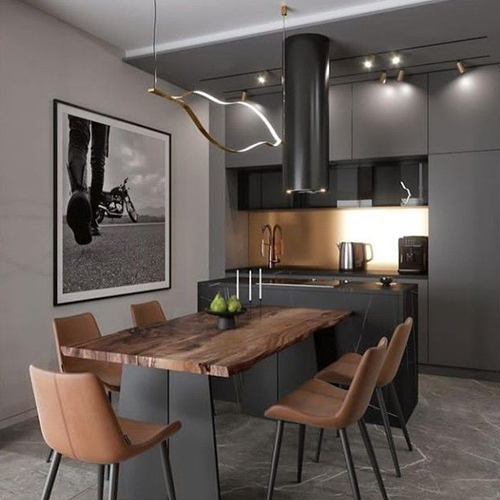
II. Deep integration of smart technology and cabinets
Intelligent operating experience
In the future, inductive switch technology will be widely used in kitchen cabinets. Users only need to touch or wave their hands to open and close the cabinet door, thus avoiding contamination of the cabinet surface by oily hands. At the same time, smart cabinets may be embedded with advanced voice recognition systems. Through linkage with smart home systems, users can easily control various functions of the cabinets through voice commands, such as adjusting light brightness, opening internal drawers, querying food storage status, etc., which greatly Improved operational convenience.
In addition, automatic recognition technology will also deeply penetrate into the design of future cabinets. For example, the built-in RFID or barcode scanning device can automatically identify the information of stored items, which not only facilitates users to quickly find the items they need, but also monitors the expiration date of food in real time, effectively preventing expired food from being wasted. Furthermore, smart cabinets may combine visual recognition and AI algorithms to automatically recommend recipes based on the ingredients put in, and even complete the cooking process with smart kitchen utensils, providing users with a comprehensive smart kitchen experience.
Application of Internet of Things Technology
In future smart cabinet systems, IoT technology will play a key connection role. Through the Internet of Things, cabinets can realize data sharing and linked operations with smart refrigerators, ovens and other devices in the home. For example, a smart refrigerator can monitor and record the type, quantity, and shelf life of stored food in real time, and synchronize this information to the smart cabinet system. When users open the cabinet, they can clearly understand the storage status of various ingredients through the display, making it easier to replenish them in time or arrange their use reasonably.
At the same time, based on the collected food data, smart cabinets can combine built-in AI algorithms for in-depth learning and analysis, automatically recommend corresponding recipes based on existing ingredients, and even directly send instructions to the smart oven to preheat or set the cooking mode, truly realizing Provides integrated services from food management to dish production.
In addition, when food is approaching its shelf life, the smart cabinet will not only issue a reminder on the screen, but can also link with the mobile APP to push notifications, effectively avoiding food waste and improving the quality of life. In short, the Internet of Things gives cabinets greater interactivity and practicality, making them an important part of the future smart home ecosystem.
Energy-saving and environmentally friendly design
In future cabinet design, the application of environmentally friendly technology will be more extensive. First of all, LED internal lighting systems are one of the standard features of modern cabinets. Compared with traditional lighting equipment, LED lights have low energy consumption, long life and no mercury pollution, which is more in line with the concept of green energy saving. The embedded LED light strip can provide even and soft light, which not only makes it easier for users to find items, but also creates a comfortable kitchen atmosphere.
Secondly, energy-saving insulation materials such as vacuum insulation panels and high-efficiency insulation cotton are widely used in cabinet doors and cabinet inner walls, which can effectively block the impact of external temperature on internal food, reduce hot and cold energy losses, and save energy consumption. It can also maintain the freshness of food and improve storage efficiency.
In addition, solar power supply technology is also an important trend in the development of cabinets in the future. By installing solar panels to collect solar energy and convert it into electrical energy to power smart devices in the cabinets, we can further achieve the ideal state of zero emissions and zero energy consumption. This design is not only beneficial to environmental protection, but also reduces energy costs for users, embodying the design concept of harmonious coexistence between man and nature.
In summary, the application of environmentally friendly technologies such as LED internal lighting systems, energy-saving insulation materials, and solar power supply in cabinet design not only improves the functionality and user experience of cabinets, but also highlights the move towards sustainable development of home life. Determination and action.
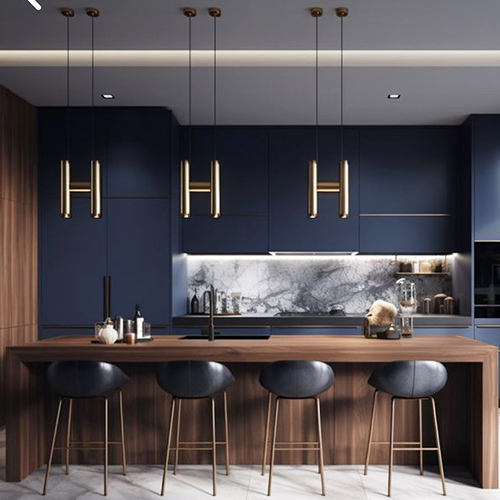
III. The trend of personalization and modular design
1. Personalized customized service
The combination of 3D printing technology and VR virtual reality technology provides consumers with a new personalized kitchen cabinet design experience. First of all, through 3D printing technology, designers can quickly produce physical models or customized parts according to customer needs to achieve precise size matching and unique shape design. Whether it is complex spatial adaptability or personalized decorative details, it can be easily realized.
Secondly, with the help of VR virtual reality technology, consumers can wear VR equipment and immerse themselves in a three-dimensional simulated kitchen environment, intuitively experience the actual effects of different design solutions, adjust cabinet layout, color, material and other elements in real time, and preview the real scene of the future kitchen. This immersive experience allows consumers to fully participate in the design process before the plan is implemented, ensuring that the final product perfectly meets personal preferences and actual household needs, thus greatly improving the degree of personalization and satisfaction of home design.
2. Modularity and scalability
The modular design gives cabinets unprecedented flexibility and adaptability. The core concept is to divide the cabinet into multiple independent and combinable functional units, such as storage cabinets, drawers, open shelves, etc. Users can freely select and match these modular units according to actual needs and space conditions, and build a cabinet layout that best suits them like a "jigsaw puzzle".
When the number of family members changes, lifestyle adjustments, or kitchen space modifications, users can easily add storage modules to expand storage space, or reduce some modules to optimize the activity area. In addition, the modular design also facilitates repair and replacement. There is no need to replace the entire unit when it is partially damaged, which greatly reduces maintenance costs and waste of resources.
Therefore, the modular design allows cabinets to better adapt to different house types and meet individual needs, becoming a flexible, efficient and practical storage solution in modern homes.
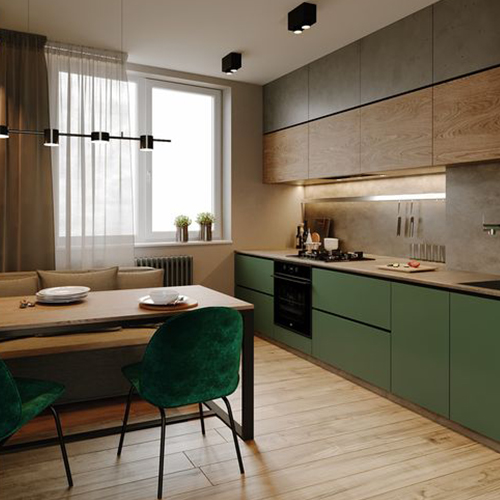
IV. The impact of new materials and process innovations on cabinet design
In the production of cabinets, the use of new materials has significantly improved product quality and service life. For example, nanomaterials are used in cabinet surface treatment due to their unique microstructure and excellent properties, forming a wear-resistant, stain-resistant, and easy-to-clean nanocoating, which effectively prevents moisture penetration and bacterial growth, and greatly extends the service life of cabinets.
Antibacterial materials such as silver ion antibacterial boards are used inside cabinets to inhibit the growth of microorganisms, ensure the safety and hygiene of stored food, and reduce the risk of cross-contamination. In addition, the use of recycled materials (such as bamboo fiber, waste plastic, etc.) in cabinet manufacturing not only embodies the concept of green environmental protection, but also ensures good durability and stability, reducing the impact on the environment.
To sum up, the application of these new materials not only improves the functionality and safety of kitchen cabinets, but also enhances the environmental attributes of the products, further meeting the needs of modern consumers for high-quality, healthy and environmentally friendly home life.
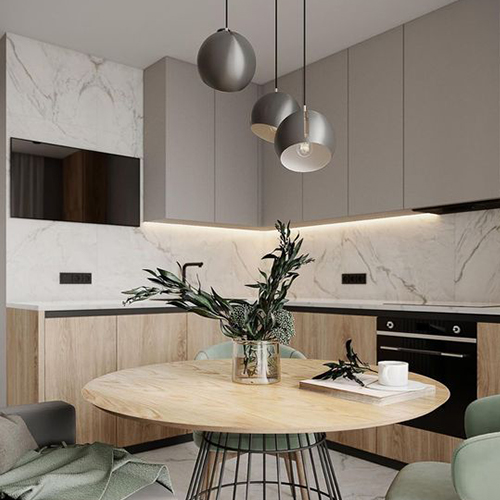
V. Sustainability considerations for future kitchen cabinets
Under the guidance of the concept of circular economy, cabinet design needs to comprehensively consider the entire life cycle of the product. First of all, attention should be paid to ease of disassembly during the design stage, and modular structures and standardized accessories should be used so that the cabinets can be easily disassembled into individual parts after reaching the end of their service life for recycling or separate disposal.
Secondly, choose renewable materials and environmentally friendly manufacturing processes, such as bamboo, fast-growing wood, and low-VOC emission adhesives, to reduce the environmental impact during cabinet production and ensure that the products are easily biodegradable or recycled after disposal. use.
Finally, kitchen cabinet design also needs to consider its durability and maintainability. By improving product quality and providing convenient maintenance services, it can extend the service life of the product, thereby reducing resource consumption and waste generation. In general, this full life cycle design concept aims to achieve green and sustainable development in the entire process from raw material acquisition, production and manufacturing to product waste disposal.
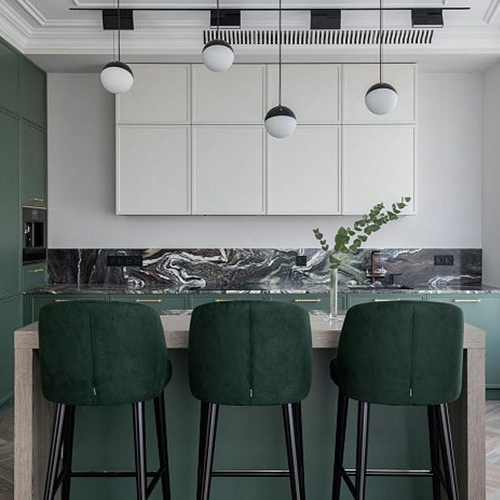
VI. Conclusion
The main trends in the future development of kitchen cabinets will revolve around multiple dimensions such as technology, personalization, environmental protection and sustainability. First of all, technological intelligence will be the core driving force. The deep integration of intelligent sensor switches, voice control, automatic identification technology and the Internet of Things will make cabinets the core intelligent terminal of kitchen life, realizing functions such as food management, recipe recommendation and equipment linkage. Create a convenient and efficient user experience for users.
Secondly, personalized design is becoming increasingly prominent. The application of 3D printing and VR virtual reality technology allows consumers to deeply participate in the design process and customize unique cabinet plans that meet their personal aesthetic and functional needs to suit different house types and lifestyles.
Furthermore, the principles of environmental protection and sustainable development have been deeply implemented in the cabinet industry, using new environmentally friendly materials such as nanomaterials, antibacterial materials, and recycled materials, and focusing on the full life cycle design of products, striving to be easy to disassemble, recycle, and low-cost. Environmental impact, maximizing resource utilization and minimizing waste.
To sum up, future cabinet products will be led by technology, characterized by personalized design, and with environmental protection concepts as the core. Together, we will build a more convenient, smarter, and greener future kitchen life scene, and promote the sustainable and healthy development of the cabinet industry. Satisfy people's yearning for high-quality, high-efficiency and environmentally friendly home life.

